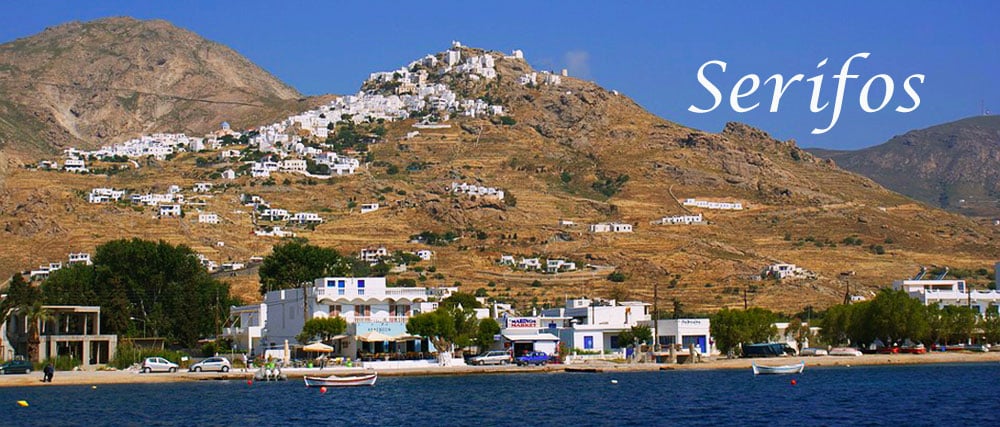Information about Serifos island Greece
Serifos is one of the Greek Cyclades Islands located in the Aegean Sea 73 nautical miles south east of the mainland port of Piraeus. The island is popular with Greek visitors but has the beautiful unspoilt beaches and a taste of the “real Greece ” to escape the ravages of mass tourism.
Come here to where isolated homesteads can only be reached via a donkey track. Bring a good book because the tourist facilities on Serifos don’t extend much beyond a few hotels, rooms to let and waterfront tavernas offering traditional Greek fare.
The island’s lack of commercialisation means it doesn’t have its own airport. The nearest airport is on Milos, to the south west of Serifos (two hours by ferry). Daily ferry services connect the island with Piraeus (four and a half hours), Milos and Kimolos.
Less frequent ferries run to and from the islands of Kythnos, Paros, Syros and Folegandros. Ferries run once a week to Santorini, Ios and Sikinos. If you’ve got more cash than time, catch a fast boat from Piraeus (two and a quarter hours), Milos (one and a quarter hours) or neighbouring Sifnos (20 minutes).
You’ll arrive at the ferry port of Livadi, in an elongated bay in the south east corner of the island where the majority of holiday accommodation is centred. The port has its fair share of waterfront cafes, tavernas and music bars and is a good base for accessing the island’s main beaches and the lovely hilltop capital of Hora.
You’ll need to be a keen walker or hire a set of wheels to explore the rest of the island which is peppered with traditional villages, pretty white chapels and farms where tomatoes, vines and olives are cultivated in fertile valleys nestling amid the barren hills.
Mythology
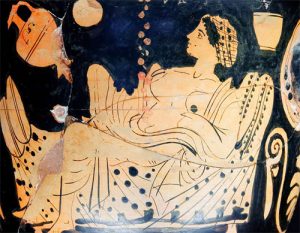 Serifos is known as “the barren one” and, according to legend, its one time king Polydeukes was turned to stone along with everything that was beautiful on the island.
Serifos is known as “the barren one” and, according to legend, its one time king Polydeukes was turned to stone along with everything that was beautiful on the island.
The island’s fate was sealed by Perseus who was reputedly washed up on these rocky shores as a boy along with his mother Danae.
The pair were locked in a box and tossed into the sea by Danae’s vengeful husband after she gave birth to Perseus by the all-powerful god Zeus.
Danae’s great beauty brought the unwanted attentions of the island’s king so Perseus punished the lascivious Polydeukes by slaying the snake-haired Gorgon Medusa and brandishing her head before the king who was duly petrified.
History
Serifos more or less has a common history with all the islands of the western Cyclades. Colony of inhabitants of mainland Greece, in the Athenian alliance later, in the descendants of Alexander and then in the Romanse. To the Byzantines and the Franks ending with the Turks. While for a long time it suffered from the raids of the Aegean pirates.
An important peculiarity was the fact that Serifos has always been important for its subsoil. Thus, it did not create the maritime tradition that other, neighboring islands have. The iron ores that Serifos hides in her arms were used to make the swords of Alexander the Great’s companions, but also for the German war industry of the early 20th century.
The exploitation of iron ores in Serifos had started long ago, before historical times and lasted until 1963. From then on, Serifos has been trying to put its own stamp on the modern tourist map of Greece and it seems that in recent years it has succeeded with the better way.
Culture and people
Serifos’ cultural identity is also deeply influenced by its religious traditions and celebrations. The Greek Orthodox faith plays a central role in community life, with numerous chapels dotting the landscape and religious festivals, or ‘panigiria,’ bringing together locals and visitors in celebration. These festivities are marked by traditional music, dancing, and the sharing of local delicacies, offering a glimpse into the island’s communal spirit and hospitality.
The people of Serifos are known for their warm hospitality and strong sense of community. Visitors are often struck by the openness and friendliness of the local population, who are proud of their island and eager to share its beauty and traditions. This sense of belonging and community support is particularly evident in the way the locals celebrate together, support local businesses, and preserve their cultural heritage.
The culinary traditions of Serifos are another vital aspect of its culture, with local cuisine reflecting the island’s history and geography. The diet is based on fresh, locally-sourced ingredients, including vegetables, legumes, fish, and cheese, creating a simple yet flavorful culinary experience. Dishes such as ‘revithada’ (slow-cooked chickpea soup) and handmade ‘loukoumades’ (honey puffs) are staples, showcasing the island’s agricultural heritage and the locals’ skill in making the most of their resources.
In terms of lifestyle, Serifos maintains a balance between tradition and modernity, with the slower pace of island life offering a respite from the hustle and bustle of the mainland. The locals’ deep connection to the sea, the land, and their community defines their way of life, with farming, fishing, and small-scale tourism being the mainstay of the island’s economy.
Reasons to visit Serifos
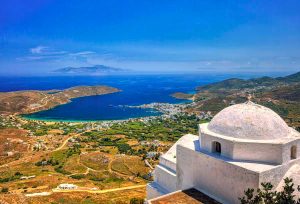
Its fairy-like charm surrounds you everywhere and especially when you walk through the small cobbled streets of Chora with the picturesque, Cycladic houses with colorful shutters and whitewashed yards. When you swim on its golden sandy beaches, with their emerald waters, the ruins of the great prosperity of Serifos during the metallurgical era will come to mind. According to mythology, Danae’s box with Perseus, who became a man in Serifos, washed up in Serifos. This is Serifos!!!
Picturesque, traditional settlements, eerie landscapes, fertile valleys, coves and beautiful beaches, picturesque churches, bare hills, and endless coastlines make up the natural splendor of the island. The authentic Cycladic aura creates an island that, when you visit it for the first time, you will always want to return to discover something new.
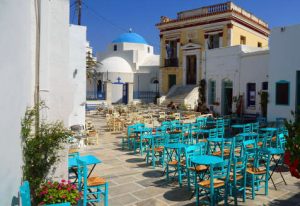
You can have fun in the bars of the island or spend romantic evenings enjoying the sunset and the unique view.
Serifos is one of the islands that has not lost its beauty from the tourist traffic. Thus, it maintains unchanged its traditional island character and is considered one of the popular and favorite holiday destinations.
When to go to Serifos
The best time to visit Serifos depends on what you’re looking for in your vacation. The island enjoys a Mediterranean climate, characterized by hot, dry summers and mild, wetter winters. Each season offers a different experience, catering to various interests from beach-going to hiking and cultural exploration.
Summer (June to August) is the peak tourist season. The weather is hot and sunny, perfect for beach activities, swimming, and water sports. The island vibrates with energy as cafes, tavernas, and shops open their doors to visitors. This is also when you’ll find cultural events, festivals, and the traditional Greek island nightlife at its most vibrant. However, it’s also the busiest and most expensive time to visit, with crowded beaches and higher accommodation rates.
Spring (April to May) and autumn (September to October) are considered the best times to visit for those who prefer a more relaxed atmosphere and milder temperatures. These shoulder seasons offer the ideal conditions for outdoor activities like hiking, exploring the island’s rich history, and enjoying the natural beauty without the summer crowds. The sea temperature remains warm enough for swimming well into October. Additionally, accommodation prices are more moderate, and you’ll have a better chance of experiencing local life.
Winter (November to March) on Serifos is quiet, as this is the off-peak season. Many businesses and accommodations may close, and ferry services are less frequent. However, this period offers a unique opportunity to experience the island’s authentic charm, with fewer tourists and a focus on local life. The weather is cooler and can be rainy, making it less ideal for beach activities but great for enjoying the tranquility of the island, engaging with the community, and exploring cultural sites without the crowds.
Where is Serifos
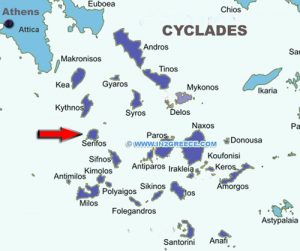
The highest peak is Tourlos and has an altitude of 585 m. Its subsoil has hematite and magnetite deposits formed by contact metamorphism at the boundaries of a granitic intrusion and are skarn-type deposits rich in various minerals.
In the south-western area of the island, Koundouros, there are copper deposits as well as remains of copper ore smelting in the place with the eloquent toponym “Skouries”. The copper rusts in this location above the adjacent bay of Abessalos, stand there as false witnesses of metallurgical activities from prehistoric times to late antiquity.
In the area of Moutoula, in the Northern part of the island, near the settlement of Galani, a small occurrence of mixed sulphide minerals is known, where in the past there was limited exploitation. In 2004, a dam with a capacity of 700,000 m³ was built at the “Steno” location near Livadi for the island’s water supply and irrigation. Near Serifos are the islets Serifopoula in the North and Vous in the East.
What to do in Serifos
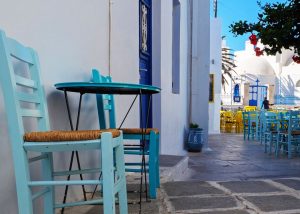
in a waterfront taverna. You don’t come here for the frantic tourist activity to be found on the more popular islands such as Mykonos or Santorini. But if you want to explore the island you’ll find it offers plenty of places of interest – traditional villages, scattered churches and monasteries, hidden coves and pretty fishing hamlets.
If you’re staying in the port of Livadi you’ll want to take a trip up to the island capital, Hora, either by bus or on foot. If you’re travelling out of season you won’t have any choice as the bus service grinds to a halt along with most of the other limited tourist facilities on the island.
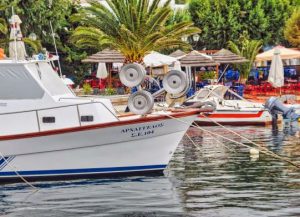
Refresh yourself with a drink or a meal in one of the many cafés and tavernas which flank the charming town square before continuing your journey up some more steps to the fortress. Pop along to the town’s archaeological museum to see pieces of pottery and sculpture unearthed at the fortress and artifacts from the island’s Roman years.
Hora isn’t exactly a shopaholic’s paradise but you’ll find several good quality arts and crafts workshops which are ideal if you’re looking for souvenirs or gifts to take home.
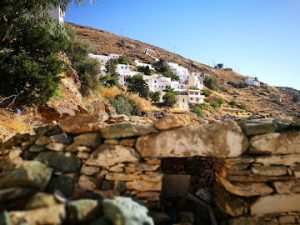
The inland village of Panagia, to the south of the monastery, has pretty whitewashed alleyways and a 10th century church which is a hive of activity on August 16th (the feast day of its patron saint).
Sikamia, in the north west corner of the island, is a picturesque fishing port with some beautiful unspoilt beaches nearby. The sleepy fishing ports of Koutalas and Megalo Livadi in the south west are also worth a visit if you want a break from the relative hustle and bustle of the main port of Livadi.
Nightlife
Serifos’ nightlife, while not as bustling as some of the more renowned Greek party islands, offers its own unique charm and laid-back vibe, making it perfect for those who seek a more relaxed evening experience. The island’s nightlife centers mainly around Livadi, the port area, and Chora, the picturesque hilltop capital. Here, visitors can enjoy a variety of options that cater to different tastes and moods, all within the serene and authentic atmosphere of this Cycladic island.
In Livadi, the waterfront comes alive in the evenings with a selection of bars and cafes that offer stunning views of the Aegean Sea. These venues often feature outdoor seating, allowing guests to enjoy the gentle sea breeze as they sip on cocktails, local wines, or ouzo. The atmosphere is convivial but laid-back, with music ranging from traditional Greek tunes to more contemporary beats, albeit at a volume that encourages conversation and relaxation.
Shopping
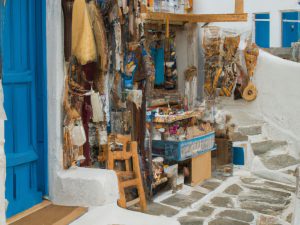
In Chora, the island’s capital, and Livadi, the main port area, shoppers can explore quaint streets lined with small shops and boutiques. These venues offer a variety of goods, from traditional Greek products to unique Serifos-specific items.
Getting around Serifos
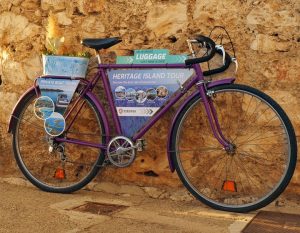
If you want to explore the whole of the island and you’re not a keen hiker, you’ll need to hire a car or better still a moped. With a motorbike or moped you’ll be able to reach otherwise inaccessible parts of the island via partly paved tracks.
Check that your travel insurance covers you for motorbike accidents because many policies don’t. And remember that wearing a helmet is compulsory in Greece if you’re riding anything over 49 cc although you wouldn’t think so to look at many of the local motorcyclists. In any event, it’s a sensible precaution because there have been numerous cases of inexperienced foreigners ending up in hospital after coming a cropper on the hazardous roads of the Greek islands.
Car and mopeds are available for hire from Krinas Travel in Livadi (50 metres from the quay next to Captain Hook Bar) and from Blue Bird Travel next to the petrol station on the main street through the port.
Dazzling whitewashed Hora should be your first stop, five kilometres up the hill from Livadi. It’s one of the most dramatic towns in the whole of the Cyclades – a delightful concoction of white sugar-cube houses, windmills and chapels dotted along narrow, twisting streets. The town affords magnificent views of the island and is crowned by the ruins of a 15th century Venetian fortress.
From there you can take the road north to the inland settlement of Panagia – well worth visiting on August 16th when the 10th century church, which is normally locked up, becomes the centre of much feasting and merrymaking in celebration of its patron saint. Travel on to Galani where it’s sometimes possible to have a simple meal and some locally produced wine in the village store.
Just to the north east of Galani you’ll find the fortified Moni Taxiarchon (Monastery of the Archangel) built in 1500. The monastery is cared for by one live-in monk who’ll be able to show you its impressive 18th century frescoes and other treasures including a bishop’s throne inlaid with marble, Egyptian lamps and Russian relics.
Take the partly paved roads to Platys Yialos beach in the north east corner of the island or windswept Sykaminia in the north west.
The road south west from Hora leads to the unspoilt fishing village of Megalo Livadi where you’ll find a sandy bay and a couple of tavernas but little else. Take the road back to Livadi via the sleepy fishing ports of Koutalas and Ganema.
If you hire a moped you’ll be able to reach one of the best beaches on the island, Psili Ammos, via a bumpy track leading north from Livadi. Otherwise it’s a hard trek of about an hour.
Local cuisine
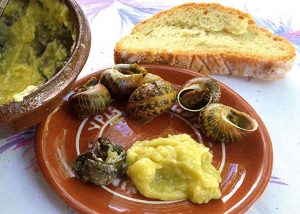
Fenugreek pies and fennel pancakes, chickpeas with raisins from a local variety, dried octopus, local cheeses, myzithres and xinomyzithres. And all this accompanied by local and sweet wine. Local food is considered the chickpeas, which are chickpeas in the oven with rosemary.
A local delicacy of Serifos is also the marathoteganites, which you can accompany with local wine or suma (a type of raki). Finally, the intoxicating wine of Surfiot is famous.
How to get to Serifos
To reach Serifos, travelers typically start their journey by flying into Athens, as it is home to the closest major international airport, Eleftherios Venizelos (ATH). Upon arriving in Athens, the next step involves making your way to Piraeus Port, which is the main gateway for ferry connections to Serifos. There are several options for this leg of the journey: taking the metro, boarding a direct bus (X96), or opting for a taxi or private transfer, with each mode of transport offering a balance between cost and convenience.
From Piraeus Port, the journey to Serifos is by sea, with a choice between conventional ferries, which offer a slower, more leisurely voyage of about 4-5 hours, and high-speed ferries that can cover the distance in approximately 2.5-3.5 hours. The type of ferry and frequency of departures can vary significantly with the season, with summer months seeing increased service to accommodate the peak tourist season.
Given the potential for variations in ferry schedules and the possibility of high demand, especially during peak travel periods, it is advisable to book ferry tickets well in advance. This can be done online through a variety of travel and ferry service platforms, or through travel agencies within Greece.
Upon arrival in Serifos, ferries dock at Livadi, the island’s main port. Livadi serves as a convenient point from which to explore the island, offering access to accommodations, beaches, and local amenities either by rental car, taxi, or the island’s bus services. It’s also the perfect base for venturing further afield to discover the enchanting landscapes and quaint villages that Serifos is renowned for.
Travelers should note that ferry schedules can be subject to change, particularly outside the summer season, necessitating a check of the most current information as the travel date approaches. Additionally, depending on the timing of flights and ferry departures, it may be necessary to spend a night in Athens before continuing to Serifos. This offers an opportunity to explore the historic capital and its attractions before embarking on the ferry to Serifos.
Lastly, Serifos’ strategic location within the Cyclades makes it an ideal starting point for those interested in island hopping, with nearby destinations like Sifnos, Milos, or Kythnos easily reachable for further exploration of the Aegean’s charm and beauty.
